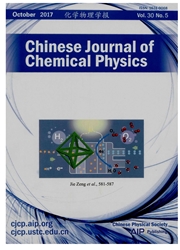

 中文摘要:
中文摘要:
发展了1,3.丁二烯掺混丙炔的详细热解反应动力学模型,包括新构建的燃料分解子机理和芳烃生成子机理,并验证了前人1,3-丁二烯和丙炔的单组分和掺混热解实验.模型可以很好地预测前人实验结果,特别是1,3-丁二烯和丙炔在多种芳烃生成过程中存在的协同效应.基于生成速率分析和敏感性分析,得到了燃料分解和芳烃生成的关键路径,并揭示了其芳烃生成过程出现协同效应的动力学机制.分析结果表明,协同效应来自于1,3-丁二烯和丙炔之间的相互作用,1,3-丁二烯热解过程中易发生的链引发反应会提供丰富的自由基,使得丙炔通过氢原子提取反应生成炔丙基,而炔丙基在芳烃生成过程中扮演着重要的作用.此外,在1,3-丁二烯掺混丙炔热解体系中同时包含了较高浓度的C3和C4前驱体,促进了甲苯和萘等关键芳烃产物的生成.
 英文摘要:
英文摘要:
A numerical investigation on the co-pyrolysis of 1,3-butadiene and propyne is performed to explore the synergistic effect between fuel components on aromatic hydrocarbon formation. A detailed kinetic model of 1,3-butadiene/propyne co-pyrolysis with the sub-mechanism of aromatic hydrocarbon formation is developed and validated on previous 1,3-butadiene and propyne pyrolysis experiments. The model is able to reproduce both the single component pyrolysis and the co-pyrolysis experiments, as well as the synergistic effect between 1,3- butadiene and propyne on the formation of a series of aromatic hydrocarbons. Based on the rate of production and sensitivity analyses, key reaction pathways in the fuel decomposition and aromatic hydrocarbon formation processes are revealed and insight into the synergistic effect on aromatic hydrocarbon formation is also achieved. The synergistic effect results from the interaction between 1,3-butadiene and propyne. The easily happened chain initiation in the 1,3-butadiene decomposition provides an abundant radical pool for propyne to undergo the H-atom abstraction and produce propargyl radical which plays key roles in the formation of aromatic hydrocarbons. Besides, the 1,3-butadiene/propyne co-pyrolysis includes high concentration levels of C3 and C4 precursors simultaneously, which stimulates the formation of key aromatic hydrocarbons such as toluene and naphthalene.
 同期刊论文项目
同期刊论文项目
 同项目期刊论文
同项目期刊论文
 期刊信息
期刊信息
